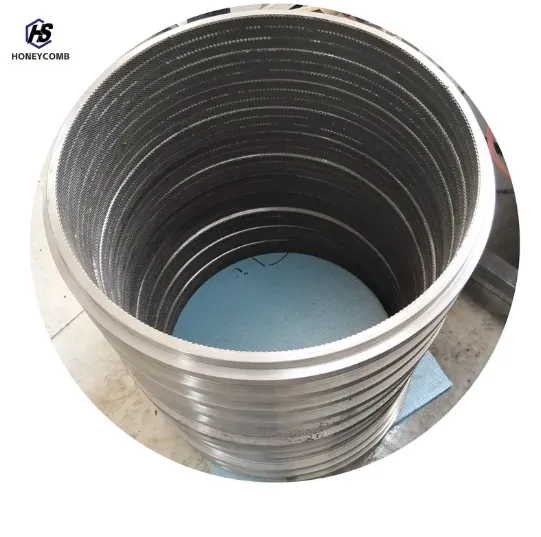
- Afrikaans
- Albanian
- Amharic
- Arabic
- Armenian
- Azerbaijani
- Basque
- Belarusian
- Bengali
- Bosnian
- Bulgarian
- Catalan
- Cebuano
- China
- China (Taiwan)
- Corsican
- Croatian
- Czech
- Danish
- Dutch
- English
- Esperanto
- Estonian
- Finnish
- French
- Frisian
- Galician
- Georgian
- German
- Greek
- Gujarati
- Haitian Creole
- hausa
- hawaiian
- Hebrew
- Hindi
- Miao
- Indonesian
- Italian
- Japanese
- Javanese
- Malay
- Persian
- Portuguese
- Punjabi
- Russian
- Spanish
- Swahili
- Telugu
- Vietnamese

Honeycomb Strips: Structure, Application, And Sustainability
Voštinové proužky, As a lightweight and high-strength engineering material, it has shown broad application prospects in packaging, construction, transportation and other fields due to its unique structural characteristics and excellent performance. This article will explore the structural characteristics, application areas, and advantages of honeycomb strips in sustainable development.

The core of honeycomb strips lies in their biomimetic honeycomb structure
By folding and bonding thin cardboard or other materials to form a regular hexagonal honeycomb structure, and then covering both sides with panels, a complete honeycomb seal is formed. This structure endows honeycomb strips with excellent compressive strength and stiffness. Compared with solid materials, honeycomb structures can achieve higher strength with fewer materials, significantly reducing the amount and cost of materials used. Its lightweight characteristics also facilitate handling and installation, reducing transportation costs.
Honeycomb strips have a wide range of applications
In the field of packaging, voštinové těsnění are commonly used to make heavy-duty packaging boxes, cushioning pads, and liners, providing reliable protection for electronic products, precision instruments, etc., and avoiding damage during transportation. In the field of architecture, honeycomb strips can be used as wall filling materials, partition boards, and lightweight roof structures. Their thermal insulation and sound insulation properties also make them play a positive role in building energy efficiency. In the field of transportation, honeycomb strips can be used to manufacture truck interior linings, train compartment partitions, etc., reducing vehicle weight and improving transportation efficiency. In addition, honeycomb strips have also been widely used in exhibition displays, furniture manufacturing, and other fields.
Honeycomb strips have significant advantages in sustainable development
Usually, the raw material for manufacturing voštinová těsnící turbína is recyclable paper, such as waste paper, scraps, etc. This method of utilizing renewable resources reduces deforestation of native forests and lowers environmental pressure. Meanwhile, Voštinové proužky themselves are also easy to recycle and reuse, forming a closed-loop loop and reducing waste generation. In addition, due to the lightweight nature of honeycomb strips, they can reduce energy consumption and carbon emissions during transportation, which is in line with the concept of green environmental protection.
Honeycomb strips also have some limitations
Its moisture resistance is relatively poor and it is prone to moisture deformation, so corresponding protective measures need to be taken during use. In addition, the load-bearing capacity of plynová turbína s voštinovým těsněním is limited by its material and structural design, and may not be able to meet the requirements in certain situations where high load-bearing capacity is needed. Therefore, in practical applications, it is necessary to select appropriate materials and structures according to specific situations, and take corresponding protective measures.
In summary, honeycomb strips have become a highly regarded engineering material due to their unique structural characteristics, wide range of applications, and advantages in sustainable development. With the continuous advancement of technology and the expansion of application fields, honeycomb strips will play a more important role in future development, contributing to the construction of a more environmentally friendly and sustainable society.
Honeycomb Strips FAQs
What is Honeycomb Strips?
Honeycomb Strips are made of a honeycomb structure (usually aluminum, Nomex) ® A strip-shaped material made of plastic, which has lightweight, high strength, and excellent compressive and bending properties. The honeycomb structure imitates natural honeycomb design, providing high stiffness to weight ratio, and is widely used in weight reduction, cushioning, and structural support scenarios.
What are the core advantages of Honeycomb Strips?
Lightweight: Low density, 50% to 90% lighter than solid materials.
High strength: The honeycomb structure disperses stress and has excellent compressive and impact resistance.
Thermal insulation and sound insulation: The closed pore structure reduces heat conduction and sound wave transmission.
Customizable: Material (aluminum, aramid, PP, etc.), adjustable aperture and thickness.
In which fields are they mainly applied?
Aerospace: aircraft cabin walls, satellite panels (reduced weight and load-bearing).
Car: door lining, battery pack buffer layer (collision energy absorption).
Architecture: Soundproofing walls, lightweight partitions (with both strength and insulation).
Electronic devices: drone frame, precision instrument bracket (shock absorber).
How to process and install Honeycomb Strips?
Processing methods: CNC cutting, laser cutting, or molding.
Adhesive: Special adhesive (such as epoxy resin) is required to ensure the bonding strength with the panel.
Attention: Avoid collapse of honeycomb walls caused by local overload, and seal the edges to prevent moisture (especially Nomex) ® Material).
What are the disadvantages compared with solid materials or foam?
High cost: The manufacturing process of honeycomb structure is complex.
Directional limitation: Vertical honeycomb direction has strong compressive strength, but parallel direction is prone to tearing.
Not resistant to puncture: Local sharp forces may damage honeycomb units.
Kategorie produktů
-
Why Vented Aluminum Honeycomb Is Leading the Way in Shielding and Ventilation SolutionsZprávyJul.18,2025
-
Why Stainless Steel Honeycomb Panel is the Ultimate Choice for High-Tech Shielding and ProtectionZprávyJul.18,2025
-
Why Honeycomb Strips Are Revolutionizing High-Speed Sealing SolutionsZprávyJul.18,2025
-
Shielded Glass Innovation Powers the Future of Electromagnetic ProtectionZprávyJul.18,2025
-
Precision Starts Here: Revolutionizing Airflow Control with Honeycomb Wind Tunnel SolutionsZprávyJul.18,2025
-
Elevate Industrial Performance with Precision-Engineered Steel Honeycomb Core SolutionsZprávyJul.18,2025
-
Vented Aluminum Honeycomb: A Smart Shield for Airflow and EMI ControlZprávyJul.11,2025















